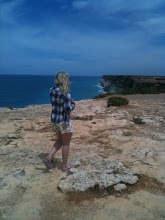Up until this semester, all the main skills that I have
acquired for Journalism have been to do with writing articles for print and a
small margin of writing for radio broadcast. Writing for television is entirely
different and was a new experience I embarked on this semester.
The major difference between the two mediums is that
television writing is more to the point and uses less words than print as we
have the images to rely on to emphasise the point not the words.
I found a website called “Tips for basic news writing” which
gives tips on how the two mediums differ and how to write effectively for
television broadcasts.
The author outlines seven key elements that can make an
effective news story these include:
1.
Keep the writing simple
2.
Keep the script short
3.
Make it conversational
4.
Active Voice
5.
Each sentence should have a new idea
6.
Have a strong lead in sentence
7.
Attribution always at the start of a sentence as
opposed to print when it’s at the end.
In the news story my partner and I co-wrote for the assessment,
we used most of the attributes outlined on the website. However, during the
editing process we did cut out unnecessary adjectives that were being used in
the script to shorten our video length and make the news story more to the
point.
I was proud of the material we produced I feel we adhered to
several of these guidelines such as the attribution at the start of sentences,
the active voice and the simplicity of the writing to a degree.
Each sentence we used had to emphasise a different point
about the centenary campaign and we found we even had to do this when using the
footage of our interviewees.
The topic we chose isn’t controversial so with our
interviewees we had to make sure each were emphasising a different point about
the centenary social media marketing as opposed to them both on different sides
of an argument.
I think our piece to camera was a bit long winded and could
have been cut down; I will work on this next time and follow the guidelines on
this website so I produce a higher quality of work.
I also believe at the beginning of our video we didn’t have
a very strong lead in sentence, the news story just suddenly begins, this needs
to be worked on for next time as well.
For tips on how to write for television visit this link:
http://journalism.about.com/od/writing/a/broadcast.htm
